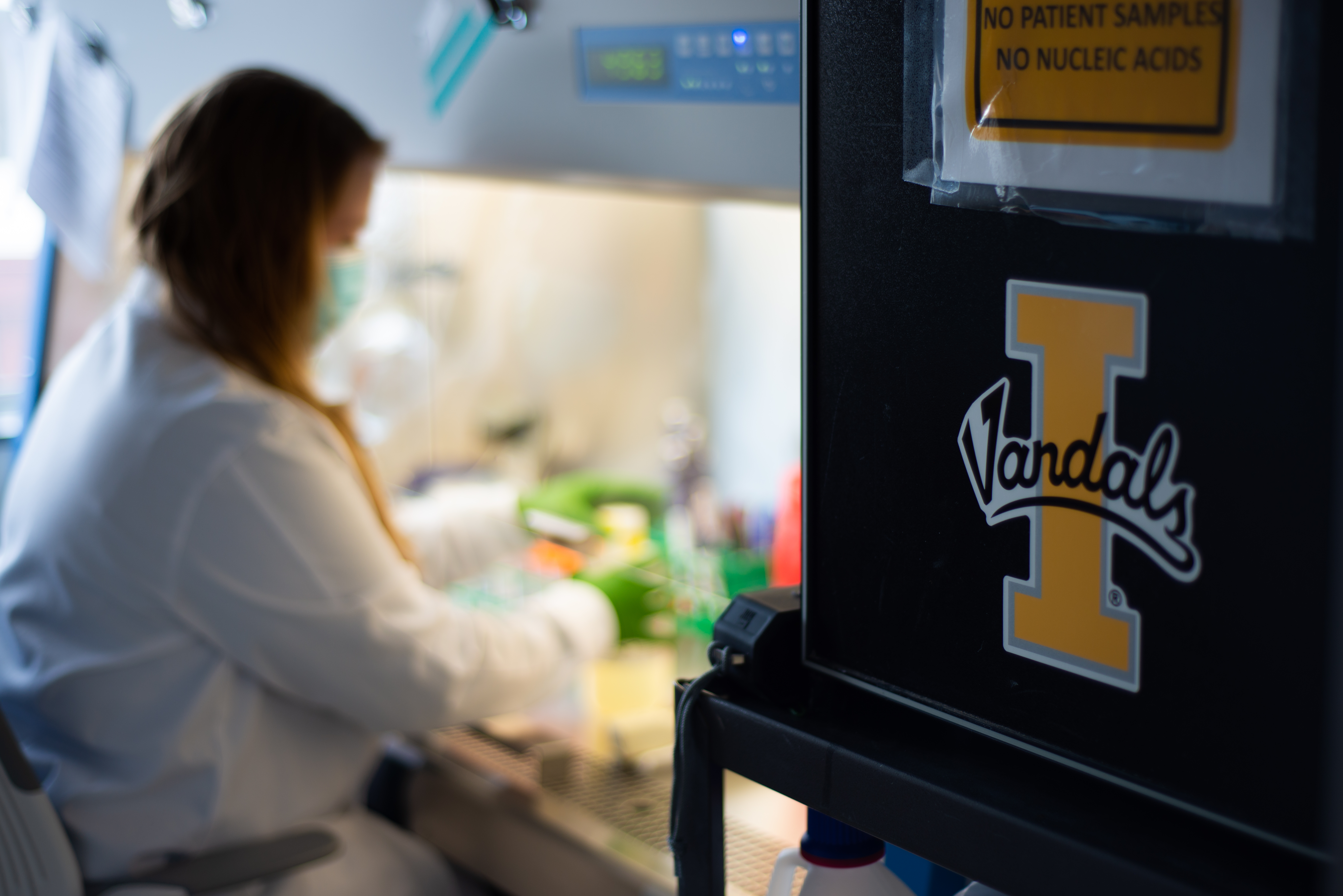
Genomic Surveillance Provides
Key Evidence Regarding
COVID-19 Transmission Dynamics
December 13, 2023Retrospective genomic surveillance of covid-positive patient samples taken early in the SARS-CoV-2 pandemic provides evidence that University of Idaho's covid-testing program, along with other mitigation measures, were effective at reducing viral spread across the university’s Moscow campus. Understanding transmission dynamics of viruses like SARS-CoV-2 at universities is crucial because these settings have potential for rapid viral spread due to a young adult population predisposed to low disease severity.
A NIH NIGMS supplement ($737,106) to the University of Idaho INBRE Program (Carolyn Hovde Bohach – Principal Investigator; grant # P20GM103408) funded the daunting work of completing genome sequencing of 1168 SARS-CoV-2 samples collected during the 2020-2021 academic year at the local hospital. These samples were collected as part of a covid-testing program implemented by the university and included samples from both the university population and the surrounding Moscow community. Patient confidentiality was protected by strict adherence to NIH approved protocols. The study relied on cutting edge PacBio high accuracy, long-read DNA sequencing technology. This technology is available at U of I’s Genomics and Bioinformatics Resources Core (GBRC) managed by the Institute for Interdisciplinary Data Sciences (IIDS). This research led to a recent publication from Kimberly R. Andrews, Daniel D. New, Digpal S. Gour, Kane Francetich, Scott A. Minnich, Barrie D. Robison, and Carolyn J. Hovde (2023) in Scientific Reports - Genomic surveillance identifies potential risk factors for SARS-CoV-2 transmission at a mid-sized university in a small rural town.
During the 2020-2021 academic year University of Idaho held in-person classes and employed a suite of COVID-19 mitigation strategies including mandatory and voluntary SARS-CoV-2 testing, mandatory quarantine following a positive SARS-CoV-2 test, masking for indoor on-campus settings except for private workspaces or residential units, physical distancing in classrooms, and hand-sanitizing stations to reduce the known risk factors for rapid viral spread at IHEs.
The researchers used the SARS-CoV-2 genome sequences to perform genomic surveillance, which involves tracking viral lineages over time to learn about transmission dynamics. This approach can help identify the causes of COVID-19 outbreaks, such as large super spreader events, holiday travel, or the introduction of new variants that are more infectious.
The researchers identified several potential transmission risk factors for the university, including congregate settings such as sorority and fraternity events and residences, holiday travel, and high caseloads in the surrounding community. But they also found evidence that outbreaks at the university were quickly contained. Although the university had more and bigger waves of infection than the community, the university waves were more short-lived. This suggests that the university’s testing and quarantine program allowed them to quickly identify and stop outbreaks.
Genomic analysis also revealed that new introductions of variants following holiday travel were identified and contained by the university. Several introductions of new variants into the university population were identified immediately following the winter break. Almost none of these resulted in onward transmission into the university or community, suggesting that testing and quarantine helped to stop newly introduced variants from spreading.
Genomic surveillance allowed researchers to quantify transmission rates between the university and Moscow community. They found that transmission rates between these two populations were low. This result was further supported by the fact that transmission dynamics differed substantially between the two populations.
Overall, the study provided multiple lines of evidence that the covid-testing program implemented by the University of Idaho was effective at identifying infections and stopping them from spreading. This likely reduced viral spread across the university and the surrounding community. The university also implemented additional measures that likely reduced viral spread, including masking, physical distancing in classrooms, and hand-sanitizing stations. In addition, the study identified important transmission risk factors for the university. This information could help the University of Idaho and other universities develop and refine effective mitigation measures for SARS-CoV-2 and similar pathogens in the future.
By Michelle Reagan, IIDS Scientific Communications and Design Specialist